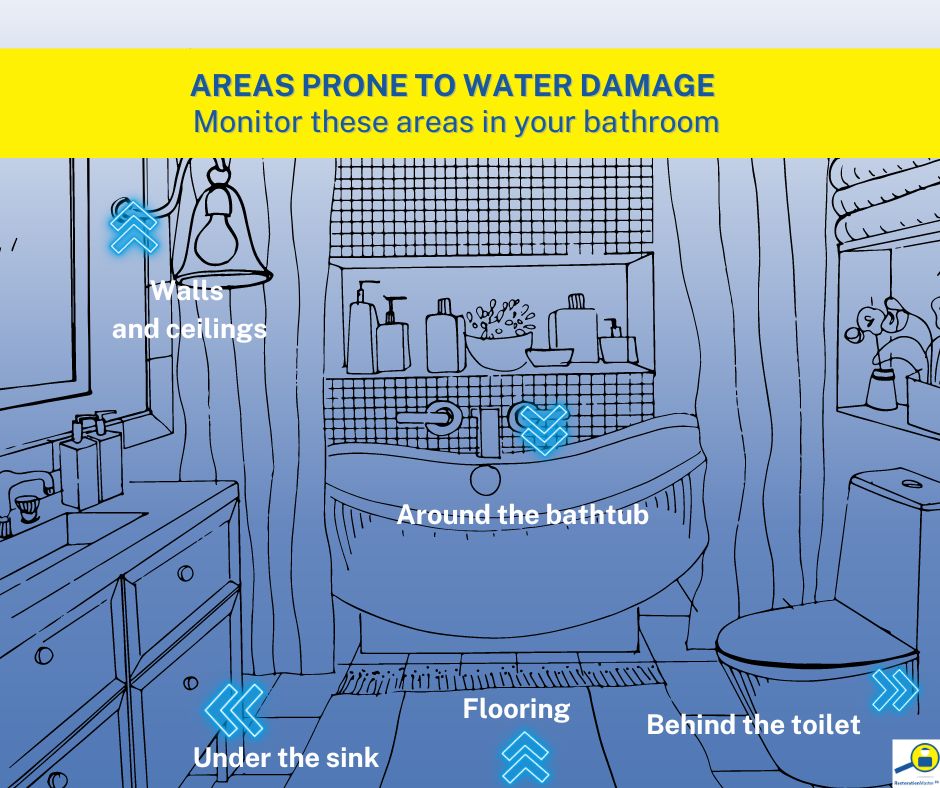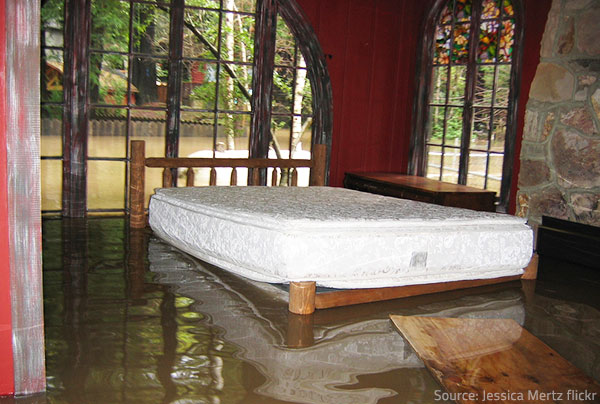Common Signs of Water Damage in the Bathroom

Your bathroom is the one place in your home where you can refresh yourself, shake off weariness, regain positive energy, or simply enjoy some privacy while relaxing in a fragrant bath. Whether you’re taking a quick shower or performing time-consuming cosmetic procedures, you need a lovely bathroom in impeccable condition.
So, make no compromises! Invest whatever effort or money is necessary to create the perfect atmosphere that allows you to relax, clean your body, and purify your spirit. Enjoy a fancy towel rack, a colorful rug on the floor, living plants, tiles forming pictures of magnificent swans, or shower curtains with floating clouds pierced by bright sunrays, magical rainbows, and kaleidoscopic raindrops in a playful dance—whatever pleases your senses and enhances your inner harmony.
To preserve this haven, however, you need to maintain your bathroom carefully and responsibly. Preventing leakage is crucial. It takes a lot of time, energy, and money to dismantle installed equipment or break down new tiles to find the cause of bathroom water damage. Therefore, ensure that your plumbing system is regularly inspected and promptly repairRepair is the act of fixing or restoring damaged property, m... More or renew any parts showing even the slightest signs of damage to avoid costly repairs in the future.
Keep in mind that detecting the signs of water damage is not always easy, especially in a bathroom where water is prevalent. You need to know what to look for to prevent floodingFlooding is the overflow or accumulation of water in areas t... More and other similar problems. The first signs of water damage are often well-hidden and easily overlooked. However, discovering them in time can save you from significant headaches and substantial expenses for water damage restoration.
High-Risk Areas for Water Damage in the Bathroom

Knowing where to look can help you catch problems early. Here are the top areas in your bathroom that are at high risk:
- Shower and Bathtub
- Under the Sink
- Toilet Base
- Walls and Ceiling
- Flooring
- Water Heater
- VentilationVentilation is the process of exchanging or circulating air ... More Fan
7 Signs Say Your Have Water Damage in Your Bathroom
Water damage can start to settle in your bathroom within hours of exposure to moisture. Over time, if left unchecked, it can leadLead is a heavy metal that can be toxic to humans, especiall... More to more significant problems like structural damage or extensive mold growth. Here’s what to look for to determine if your bathroom is experiencing these problems:
Musty Smell
Visible Mold

Suspicious Walls
Crumbling plasterPlaster is a building material made of lime, gypsum, or ceme... More or blistering paint is just the initial sign of an impending disaster. If water is dripping behind the walls, you may be dealing with a leaking pipe. When drywall absorbs water, it swells and becomes softer, sometimes even feeling slightly wet to the touch. This process is usually gradual, so initially, the walls may just appear a little uneven or crooked. Uncertainty about the issue might leadLead is a heavy metal that can be toxic to humans, especiall... More you to lower your guard, allowing serious problems to develop. Despite the temptation to ignore these warning signs, remember that any delay will only worsen the situation and leadLead is a heavy metal that can be toxic to humans, especiall... More to higher costs.
If you notice movement when pressing on the tiles in your bathroom, gaps in the grout or caulk, or deepening cracks, it’s time to address a potential hidden issue. Especially if you observe inexplicable stains or wall warpingWarping is the bending, twisting, or distortion of materials... More, seek immediate help to prevent further damage and avoid costly repairs.
Damaged Floors
Bathroom floors are designed to handle water, so they generally remain in good condition unless a leak develops. However, persistent moisture beneath the floor can leadLead is a heavy metal that can be toxic to humans, especiall... More to cracking, buckling, and staining. If you notice any of these issues in your bathroom, it’s time to sound the alarm. Often, the subfloorThe subfloor is the foundational layer beneath flooring mate... More in your bathroom is made of plywood, which begins to rot when exposed to moisture. Over time, the floor may become softer and even unstable or spongy. The source of the moisture must be repaired as soon as possible to avoid the need for water damage cleanup in your home.
Dripping Water
A dripping faucet or pipe is a red flag for potential water damage because it usually means there’s a leak somewhere in your plumbing. Even a small drip can leadLead is a heavy metal that can be toxic to humans, especiall... More to significant issues if not fixed right away. Over time, this constant moisture can damage walls, floors, and ceilings, weaken materials, and create a breeding ground for moldMold is a type of fungus that grows in damp or humid conditi... More and mildewMildew is a type of fungus that grows on damp surfaces, typi... More. Sometimes, the source of the drip might be hidden behind walls or under floors, making it easy for problems to worsen unnoticed.

Rusty Fixtures
Rusty or corroded fixtures in your bathroom are a major warning sign of water damage. When metal parts like faucets or showerheads start to rustRust is a reddish-brown oxide that forms on iron or steel du... More, it usually means they’ve been exposed to moisture for too long. This could indicate a hidden leak or poor ventilationVentilation is the process of exchanging or circulating air ... More in the room. Corrosion on fixtures often means that moisture is also affecting other areas of the bathroom. Over time, this rustRust is a reddish-brown oxide that forms on iron or steel du... More can weaken the fixtures and potentially cause leaks, which could leadLead is a heavy metal that can be toxic to humans, especiall... More to more damage to your walls and floors.
Cracks in Grout and Caulks
When there are cracks in grout and caulk, it can cause moisture to seep into areas it shouldn’t. These materials are meant to create a watertight seal around tiles and fixtures, so cracks compromise their effectiveness. This allows water to get behind the tiles or into the walls, leading to hidden damage that might not be immediately obvious.
Bathroom water damage can be successfully prevented if you:
- Regularly inspect the shower area and check all spots around the sink. Remember that cracked tiles or missing grout will allow water to leak into the floor or the walls, so repairRepair is the act of fixing or restoring damaged property, m... More them immediately and seal everything as well as you can. Ensure that the shower head and all the faucets are tightly placed and do not drip.
- Maintain all the pipes and valves, as well as the entire plumbing system. Fix noticeable leaks immediately and replace any rusty old parts. Pay attention to the drainage areas, too – keep them clean and unclogged.
- Mind the condition of your toilet. Minor leaks at the base of the toilet can eventually leadLead is a heavy metal that can be toxic to humans, especiall... More to major problems.
- Use quality exhaust fans. They will help lower the levels of humidityHumidity is the amount of moisture or water vapor present in... More and effectively prevent excessive moisture accumulation.
Bathroom floodingFlooding is the overflow or accumulation of water in areas t... More is no fun to deal with and even coping with the minor foregoing problems is rather tedious and time-consuming. If you are not up to the task, refer to water damage restoration experts for a skillful and speedy handling of the problem.












